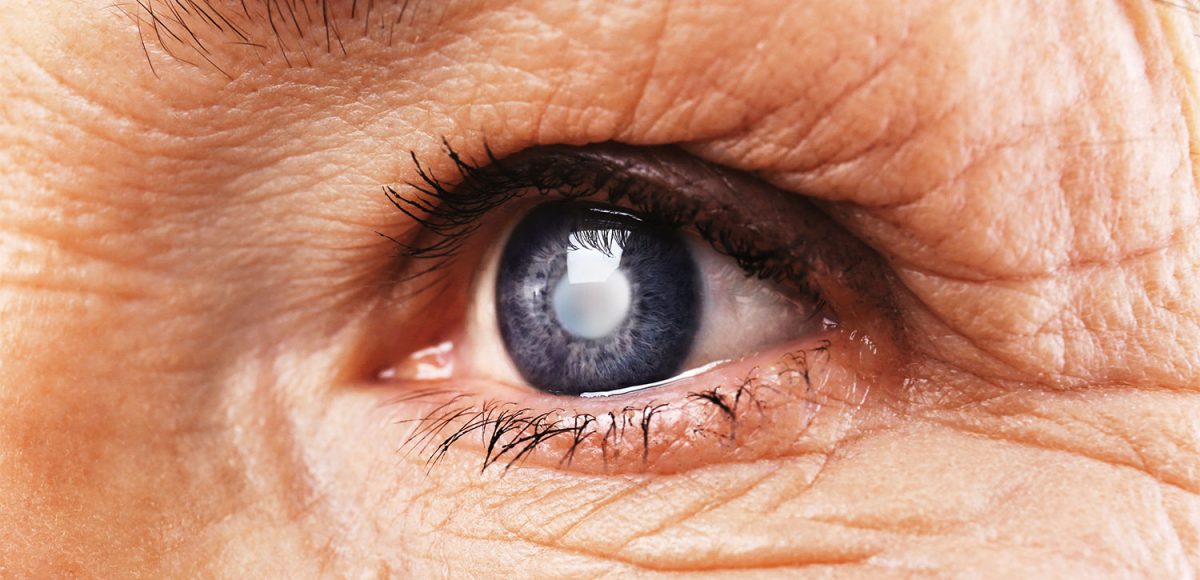When it comes to age-related conditions, cataracts and dementia are typically at the top of the list. Each condition has a significant impact on an individual’s quality of life, much so if dealing with both simultaneously. As we progress in healthcare, we are discovering more evidence that, while these two conditions are separate, they may be linked.
This article will explore the understood relationship between cataracts and dementia, the cause and progression of each, and the potential implications this connection has for both patients and healthcare providers.
What are Cataracts?
Most people are familiar with the term “cataracts.” They have likely had an elderly relative diagnosed with the condition or maybe a friend or colleague. While this is a familiar condition by name, chances are many of us would fail at describing its causes and effects.
Cataracts are classified as a condition, rather than a disease, and involve a clouding of the eye lens leading to problems with vision. They are the number one cause of vision loss among the elderly both worldwide and in the United States, and they are generally the result of age-related changes in the eye’s lens.
The colored portion of the eye is the iris, just behind that is the lens, a circular and transparent structure that is responsible for bending light to give clear sight. This visual clarity is the result of the lens focusing light onto the retina, changing shape to focus light from objects of varying distances. It is then taken from the retina to the optic nerve to the brain for interpretation.
Over time the lens can become less transparent, which results in light scattering rather than focusing onto the retina. This ultimately leads to blurred vision, double vision, and glare, which can make seeing bright lights or seeing at night difficult. Activities like reading small print, particularly in low light situations, or driving in the evening start to become difficult. Cataracts can occur in both eyes or just one and usually develop slowly over months to years without causing pain.
Understanding Dementia
Dementia is another age-related condition that may be slightly more understood, but still vague in many ways. Dementia affects nearly 50 million people worldwide. It is a progressive disorder of the brain that impacts many aspects of an individual’s quality of life including memory, behavior, ability to perform daily tasks and thinking.
Dementia is an umbrella term that includes several types: Alzheimer’s, Vascular Dementia, Lewy Body Dementia, Creutzfeldt-Jakob Disease, Huntington’s Disease, Frontotemporal Dementia, and Parkinson’s Disease Dementia.
Alzheimer’s is the most common form of dementia. As dementia progresses, the individual will become more dependent on others for help with regular daily activities.
The exact cause of dementia is not understood in its totality, but we do know a variety of factors can play a role in its development. Neurodegenerative diseases, stroke, head injury, age, genetics, heavy metal exposure, and some chronic conditions have been known to increase an individual’s risk for developing dementia.
Cataracts and Dementia–The Link
The link between cataracts and dementia is still not well understood, but recent research suggests that there may be a connection between the two conditions. One study published in the journal JAMA Internal Medicine in December 2021 found that people with cataracts had a higher risk of developing dementia than those without cataracts. The study followed nearly 3,000 patients and found that the risk of developing dementia was 29% lower among people who had cataract surgery than otherwise similar people who did not have surgery.
There are several theories about why there may be a link between cataracts and dementia. One theory is that the cloudy lens in the eye may reduce the amount of light that reaches the brain, leading to changes in brain function and ultimately contributing to dementia. Another theory is that cataracts may affect a person’s ability to see and engage in physical activity, leading to a decline in brain function over time. Additionally, some researchers believe that the oxidative stress and inflammation that occur with cataracts may contribute to the development of dementia.
It is important to note that while there may be a link between cataracts and dementia, the relationship between the two conditions is still not fully understood. Further research is needed to determine the exact mechanisms behind this connection and to determine the best course of action for patients who are at risk for both conditions.
The implications of the link between cataracts and dementia are significant for both patients and healthcare providers. For patients, it means that it is important to address both conditions and to be proactive in seeking screening and treatment for cataracts. Patients should discuss their concerns with their healthcare provider and seek regular eye exams with an optometrist or ophthalmologist to monitor their vision and the progression of their cataracts.
For healthcare providers, the link between cataracts and dementia highlights the importance of a comprehensive approach to patient care. Providers should consider both conditions when evaluating a patient and should work to develop a comprehensive treatment plan that addresses both conditions. This may involve collaboration with other healthcare professionals, such as eye doctors and neurologists, to provide the best possible care for patients.
Final Thoughts
In conclusion, while cataracts and dementia are separate conditions, there is evidence to suggest that there may be a link between the two. Further research is needed to fully understand this connection, but the implications could be significant and life changing for many patients.
Cornea specialist and board-certified ophthalmologist, Dr. Alexander Knezevic specializes in cataract surgery, LASIK, dry eye and corneal disease. He practices at the Macy Eye Center in Los Angeles, in addition to being a part of the medical staff at Cedars-Sinai Medical Center and a voluntary clinical instructor of ophthalmology at UCLA. Dr. Knezevic has published many peer-reviewed articles, presented at national conferences and written a number of book chapters on the topics of dry eye, corneal surgery and cataract surgery. He has performed an extensive number of sight-saving surgeries abroad and has been a visiting physician in both India and Nepal. Dr. Knezevic is an active member of numerous local, regional and national organizations.







